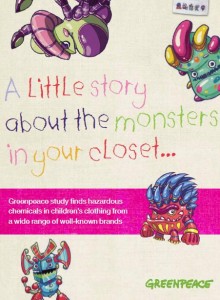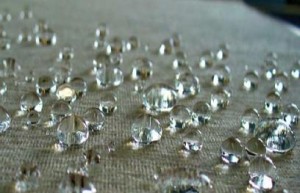Stepchange Innovations blog covering innovations and issues of the textile industry
Just weeks before the start of the football World Cup 2014, a newly released Greenpeace report, building up on earlier activities under the detox campaign, found a variety of potentially hazardous chemicals (PFOA, NPEO, and more) in sportswear products of adidas, Nike and Puma. Toxic chemicals were found in almost all football boots, gloves and shirts which were examined.
3D printing is seen as potential technology breakthrough that may radically change manufacturing processes in many industries, put whole business models at question and create new ones. However, in textile manufacturing 3D printing is still at a tiny niche and exploratory stage. We show examples of the already available and known products and trends. In future articles we will look closer at the emerging technology solutions in 3D printing of textiles. We will present the common 3D printing technologies and discuss how to overcome some of the obstacles for 3D printing of textiles.
We will try to answer the questions: Can 3D printing really play a serious role in textile manufacturing?

Ink jet printer "LaRio" by Italian company MS
The US corporation Dover, a Fortune 500 company, announced the acquisition of the Italian company MS who is the technology leader in digital ink jet printing for textiles. MS became famous with the LaRio printer, the fastest ink jet printer for textile printing.
With the increasingly important requirement for textile manufacturers to reduce pollution in textile production, the use of enzymes in the chemical processing of fibers and textiles is rapidly gaining wider recognition. Enzymes are non-toxic and eco-friendly. They can be safely used in a wide selection of textile processes such as de-sizing, scouring, bleaching, dyeing and finishing, where the traditional alternatives are very harsh chemicals whose disposal into the environment causes many problems. The article gives an introduction to enzyme technology.
Digital (ink jet) printing combines many advantages: easy coloration, direct printing off the computer screen, no screens, no colour kitchen, and attractive designs. Due to latest advances in printing speed technology a significantly accelerated growth of the technology is expected. The article outlines the drivers in this exiting market.
Greenpeace revealed a new investigation on hazardous chemicals found in childrenswear to increase the pressure on leading fashion brands, a campaign that started in 2011 as “Detox campaign”.
The second part of this article series gives information about alternative products, global regulations and environmental advantages, after the ban of APEO in Europe. Moreover, the results of the Greenpeace research about nonylphenol ethoxylate residues in textiles are discussed opposite the joined efforts of the ZDHC project.
The environmental activist group Greenpeace runs the Detox campaign requesting from international fashion brands to eliminate alkylphenol ethoxylates (APEOs) from their supply chain. In response to the Detox campaign, a group of international retailers has established a roadmap for “zero discharge of hazardous chemicals” (ZDHC) which has the aim of eliminating 11 substance groups between 2013 and 2020. At the present time, strong focus in the ZDHC programme is put on APEOs (alkylphenols and their ethoxylates), in particular on NPEOs (Nonophenol ethoxylates). This report will show the use, the risks and alternatives of APEOs.
Greenpeace launched the Detox Catwalk, an interactive online platform assessing the progress made by major clothing companies towards a toxic-free future. ZDHC founders adidas, Nike and LiNing only rated as greenwashers.
Perfluorinated fluorocarbon (PFC) polymers provide the best performance for water and oil repellent finishing on textiles, but there are serious concerns regarding their environmental and toxic properties. In this article we discuss the technical and scientific background of water and oil repellent finishing on textiles, and will look into options for future, more sustainable technologies and chemical solutions.










